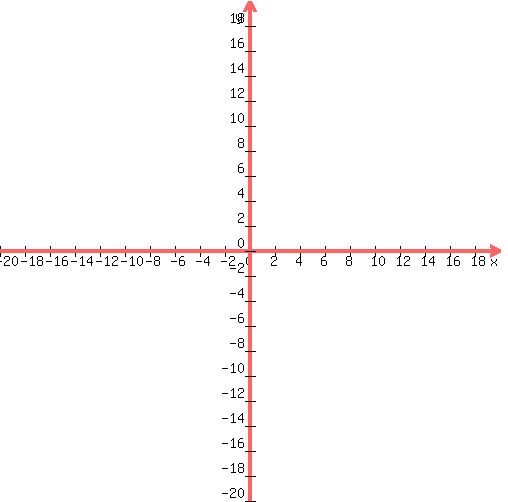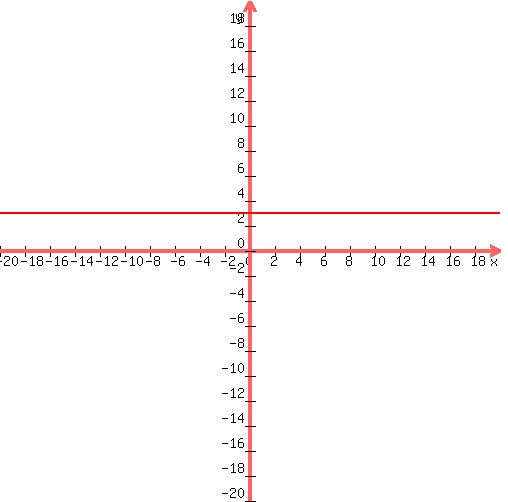Question 123632: Draw the appropriate graphs in each of the following.
A small firm produces both AM and AM/FM car radios. The AM radios take 15 h to produce, and the AM/FM radios take 20 h. The number of production hours is limited to 300 h per week. The plantís capacity is limited to a total of 18 radios per week, and existing orders require that at least 4 AM radios and at least 3 AM/FM radios be produced per week. Write a system of inequalities representing this situation. Then, draw a graph of the feasible region given these conditions, in which x is the number of AM radios and y the number of AM/FM radios.
Answer by jim_thompson5910(35256)   (Show Source): (Show Source):
You can put this solution on YOUR website!
Start with the given system of inequalities (note: if you need help with the translation, let me know)




In order to graph this system of inequalities, we need to graph each inequality one at a time.
First lets graph the first inequality 
In order to graph  , we need to graph the equation , we need to graph the equation  (just replace the inequality sign with an equal sign). (just replace the inequality sign with an equal sign).
So lets graph the line  (note: if you need help with graphing, check out this solver) (note: if you need help with graphing, check out this solver)
 graph of graph of 
Now lets pick a test point, say (0,0). Any point will work, (just make sure the point doesn't lie on the line) but this point is the easiest to work with. Now evaluate the inequality  with the test point with the test point
Substitute (0,0) into the inequality
 Plug in Plug in  and and 
 Simplify Simplify
(note: for some reason, some of the following images do not display correctly in Internet Explorer. So I recommend the use of Firefox to see these images.)
Since this inequality is true, we simply shade the entire region that contains (0,0)
 Graph of Graph of  with the boundary (which is the line with the boundary (which is the line  in red) and the shaded region (in green) in red) and the shaded region (in green)
---------------------------------------------------------------
Now lets graph the second inequality 
In order to graph  , we need to graph the equation , we need to graph the equation  (just replace the inequality sign with an equal sign). (just replace the inequality sign with an equal sign).
So lets graph the line  (note: if you need help with graphing, check out this solver) (note: if you need help with graphing, check out this solver)
 graph of graph of 
Now lets pick a test point, say (0,0). Any point will work, (just make sure the point doesn't lie on the line) but this point is the easiest to work with. Now evaluate the inequality  with the test point with the test point
Substitute (0,0) into the inequality
 Plug in Plug in  and and 
 Simplify Simplify
Since this inequality is true, we simply shade the entire region that contains (0,0)
 Graph of Graph of  with the boundary (which is the line with the boundary (which is the line  in red) and the shaded region (in green) in red) and the shaded region (in green)
---------------------------------------------------------------
Now lets graph the third inequality 
In order to graph  , we need to graph the equation , we need to graph the equation  (just replace the inequality sign with an equal sign). (just replace the inequality sign with an equal sign).
So lets graph the line  (simply draw a vertical line through (simply draw a vertical line through  ) )
 graph of graph of 
Now lets pick a test point, say (0,0). Any point will work, (just make sure the point doesn't lie on the line) but this point is the easiest to work with. Now evaluate the inequality  with the test point with the test point
Substitute (0,0) into the inequality
 Plug in Plug in  and and 
 Simplify Simplify
Since this inequality is not true, we do not shade the entire region that contains (0,0). So this means we shade the region that is on the opposite side of the line
 Graph of Graph of  with the boundary (which is the line with the boundary (which is the line  in red) and the shaded region (in green) in red) and the shaded region (in green)
---------------------------------------------------------------
Now lets graph the fourth inequality 
In order to graph  , we need to graph the equation , we need to graph the equation  (just replace the inequality sign with an equal sign). (just replace the inequality sign with an equal sign).
So lets graph the line  (simply draw a horizontal line through (simply draw a horizontal line through  ) )
 graph of graph of 
Now lets pick a test point, say (0,0). Any point will work, (just make sure the point doesn't lie on the line) but this point is the easiest to work with. Now evaluate the inequality  with the test point with the test point
Substitute (0,0) into the inequality
 Plug in Plug in  and and 
 Simplify Simplify
Since this inequality is not true, we do not shade the entire region that contains (0,0). So this means we shade the region that is on the opposite side of the line
 Graph of Graph of  with the boundary (which is the line with the boundary (which is the line  in red) and the shaded region (in green) in red) and the shaded region (in green)
---------------------------------------------------------------
So we essentially have these 4 regions:
Region #1
 Graph of Graph of 
Region #2
 Graph of Graph of 
Region #3
 Graph of Graph of 
Region #4
 Graph of Graph of 
When these inequalities are graphed on the same coordinate system, the regions overlap to produce this region. It's a little hard to see, but after evenly shading each region, the intersecting region will be the most shaded in.

Here is a cleaner look at the intersection of regions
 Here is the intersection of the 4 regions represented by the series of dots Here is the intersection of the 4 regions represented by the series of dots
|
|
|